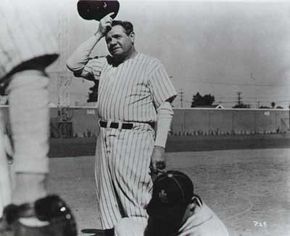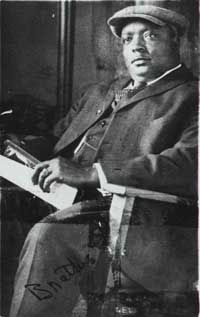In 1920, Babe Ruth played his first season as a New York Yankee. Showing the way for a new generation of upper-cutting power hitters, the Bambino posted slugging numbers the game had never seen.
Baseball Seasons Image Gallery
Advertisement
Besides hitting a Cobbian .376, Ruth swatted 54 home runs, which not only surpassed his own record of 29 but also each of the other seven American League teams. The nearest individual hitter, St. Louis' George Sisler, hit 19. Ruth led the league in slugging at .847, the highest mark recorded in either league until 2001. American League pitchers were no fools -- they walked Ruth 148 times -- but he still led the league in RBI with 137 and runs scored with 158.
Where Ruth led, others soon followed, as offense in almost every category rose steadily throughout the 1920s. Runs in the American League increased by about 1,000 in 1921. The National League followed the same pattern, although at a slower pace.
Sisler, who in 1920 actually collected 11 more total bases than Ruth at 399, batted .407, the seventh-best average of all time. Sisler also banged out 257 hits -- still a record. In the National League, Cardinals second baseman Rogers Hornsby batted a league-leading .370 and led in doubles with 44, total bases with 329, and RBI with 94.
The baseball rule-makers assisted the new home run style of baseball by changing two rules. The first was the outlawing of trick pitches such as the shine ball, the emery ball, and especially the spitball. That this had an enormous (and underrated) effect on major league pitching can be seen from the subsequent careers of 17 spitball pitchers, who were allowed, under a "grandfather clause," to continue to throw the pitch legally. While ERAs in both leagues shot up in 1920, the composite ERA of the 17 spitballers remained virtually unchanged.
The second change was the new practice of keeping clean baseballs in play throughout the game. This made for a more lively ball that traveled much farther in the air; thus, more home runs. Baseball's justification for the change was the fatal beaning of Cleveland shortstop Ray Chapman by Yankee pitcher Carl Mays, which many blamed on Chapman's inability to see a worn, discolored ball as it sped toward his skull.
Chapman's death greatly affected the American League pennant race, as New York faded to third, one game behind second-place Chicago. Cleveland won the flag thanks to Jim Bagby (31 wins) and rookie shortstop Joe Sewell, who sparked the Indians with a .329 batting average in August and September. The White Sox' chances were ruined when, after months of rumor, the team suspended the eight players suspected of throwing the 1919 World Series in the critical, final days of the season.
In the 1920 World Series, the Indians met National League champion Brooklyn, which was led by spitballer Burleigh Grimes's 23 wins and 2.22 ERA. Cleveland won the 1919 World Series five games to two. On the Indians' side, the games were marked by several World Series firsts, including Elmer Smith's grandslam, pitcher Bagby's homer, and Bill Wambsganss's unassisted triple play.
Besides the passing of the dead-ball era, 1920 also saw the establishment of the sole baseball commissionership under Judge Kenesaw Mountain Landis. This replaced the old three-man commission, which had been dominated by American League president Ban Johnson since its inception in 1903. One of Landis's first official acts was to ban for life the eight members of the "Black Sox," whose trial for fraud had resulted in a fishy acquittal that was rumored to have been engineered by powerful White Sox owner Charles Comiskey.
Check out the next section for some of the major headlines from the 1920 baseball season.
To learn more about baseball, see:
- 1919 Baseball Season
- 1921 Baseball Season
- Baseball History
- How Baseball Works
- How the Baseball Hall of Fame Works
- How Minor League Baseball Teams Work
- Babe Ruth
Advertisement

